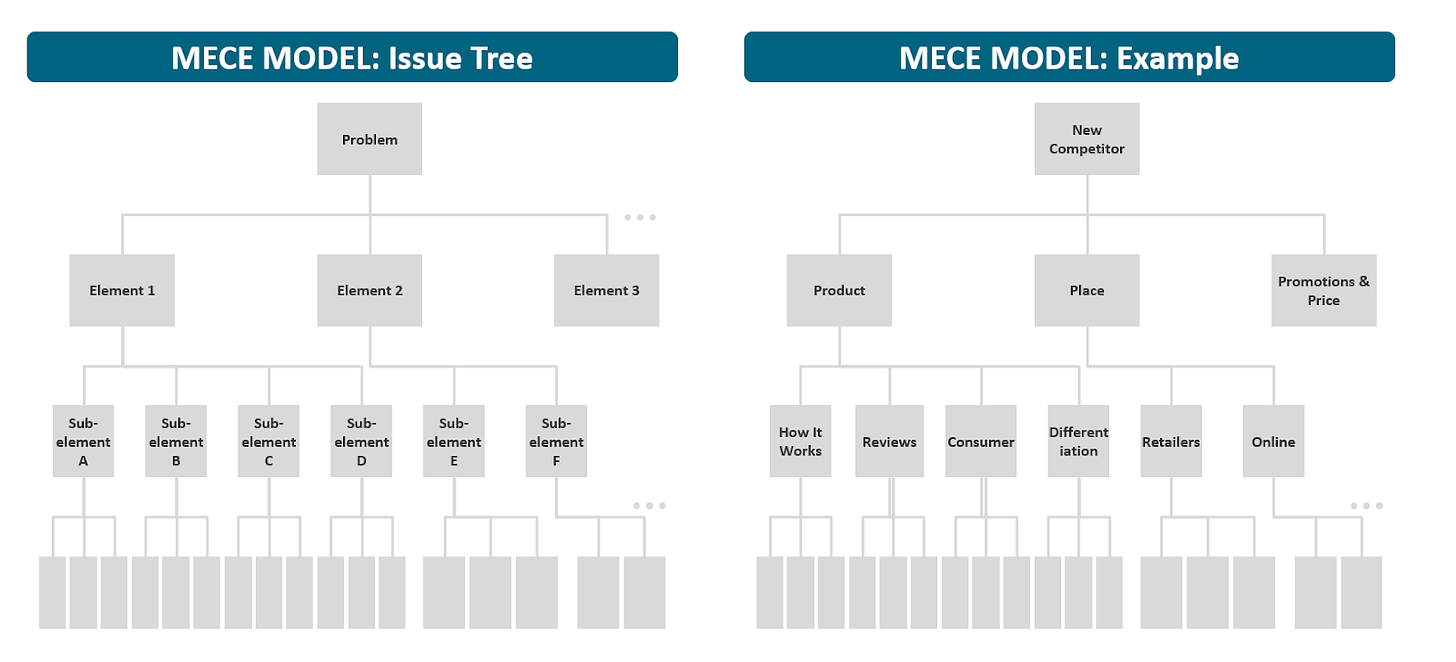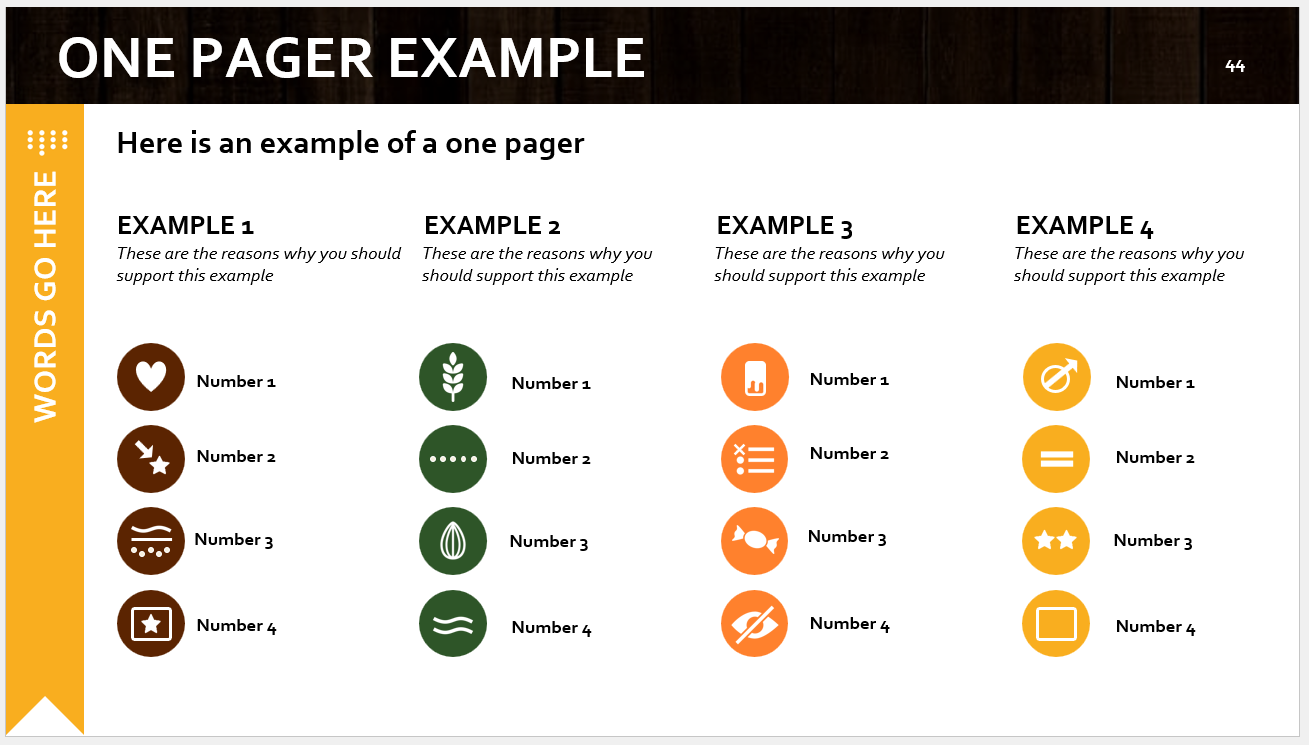I’m going to just say it – most presentations are boring. They’re usually a little ugly, not relevant for everyone, and little action is taken afterwards. I have saved a number of presentations from early in my career and each click of a page now sends a cringe worming down my whole body.
In one presentation I have tables of data with little context or takeaways. In another, I must have thought I was building a TED talk with my misuse of overbleed pictures and words.
I should have stopped and asked myself:
- Is this comprehensive enough?
- If someone printed this would they save it afterwards?
- Was my presentation sticky?
Now that I regularly build presentations for executive audiences and board meetings, I’d like to share three tips to make your presentations better:
1. Use a MECE Model. This stands for Mutually Exclusive Collectively Exhaustive. See some examples here.
The idea is to identify all of the options so you don’t miss anything. It’s simple – you just want to list out and put into buckets all of the possible options to explore, that way when you’re building your presentation it’ll be comprehensive and well-thought out.
For example, if a competitor had just entered your category and you had to build a presentation on the impact, you would want to systematically explore everything; perhaps product, place, promotions, and price, with subsets under each of these umbrellas. Rarely do you need to present all of these pieces, but merely show that they have been considered.

2. Use a Template. Powerpoint templates are pre-built slides – some decks have over 1000 different slides. Need a beautiful map? There will be one that you can then modify for your use. Same with flowcharts, tables, charts with icons, etc. One of my favorites can be found here.
Slide templates have four main benefits – (1) they save you a TON of time, (2) make your slides look more polished than others at your company, (3) provide inspiration on how to present your information in a more compelling/creative way, and (4) you will actually be more creative in your process.
A number of studies have shown that constraints can be a catalyst for creativity. For example, did you know that Theodore Geisel, known as Dr. Seuss, wrote Green Eggs and Ham after having his publisher challenge him to write a children’s book using no more than 50 words? Creativity loves constraints.
If you build a slide to be board-room quality from the onset then it will be.
Pro Tip: If you’re looking for additional places to get great (and sometimes free!) slide templates check out a few of the sites below:
- i9 Template – super versatile with nearly 1000 slides
- Slidemodel – nice assortment of different templates
- Strategy Templates – good collection of templates for strategy
3. Pin up on your desk. Create one page with your main idea – I try to embody it in either a 2×2 matrix, a graphic, or a table that is something so compelling people want to print it out and hang it by their desk. It’s powerful. Persuasive. Memorable. It’s not an executive summary, but rather your main idea told and shown clearly.
Ask yourself – what is the one thing I want people to keep after my presentation? What could be used in later follow ups? Then go make it.

One pager example download link here.
Final Thoughts. You may feel that your presentations are great, and they very well probably are. There’s a real difference though in upleveling your work if you’re able to clearly show every area explored, improve the quality of thought and presentation value by using a template, and taking the time to create a one-pager that can live on after your presentation.


